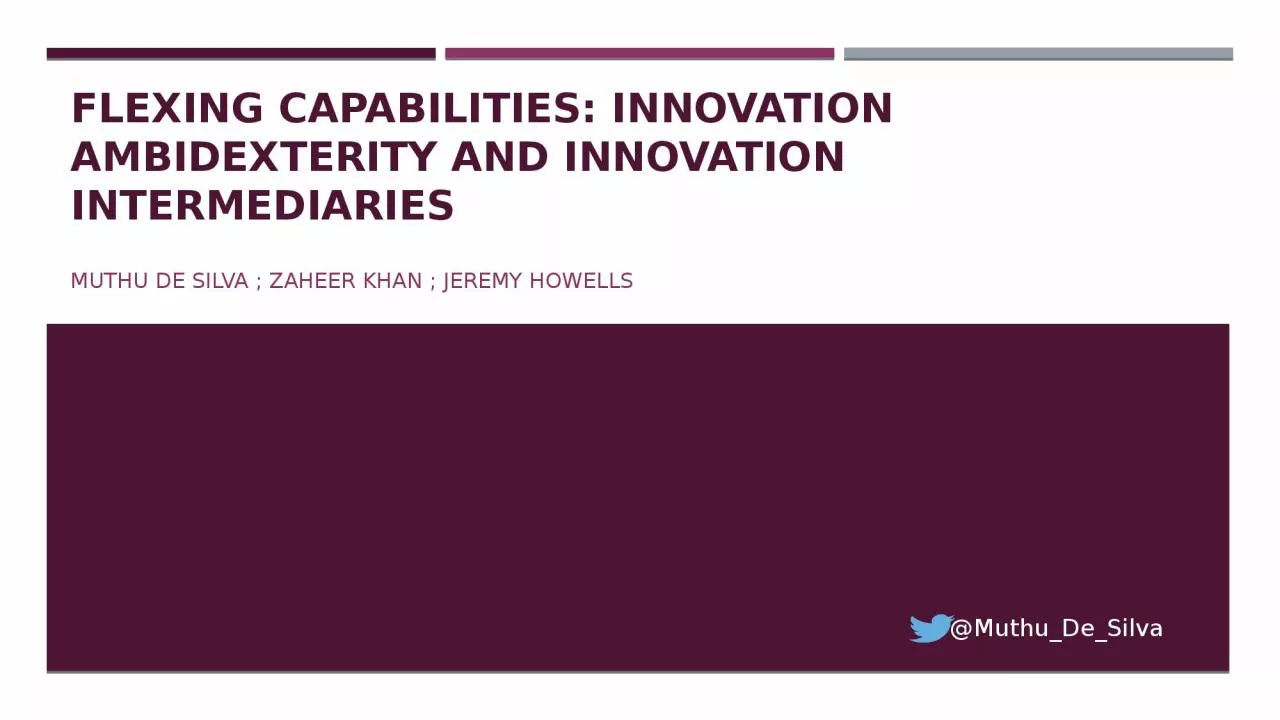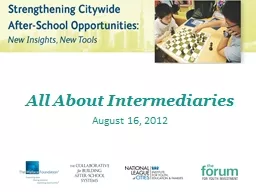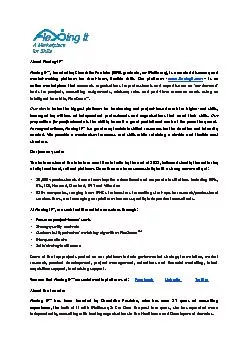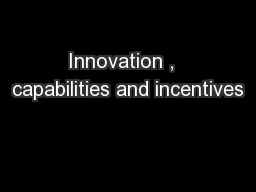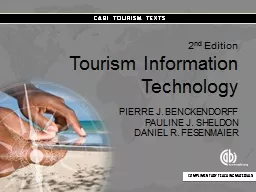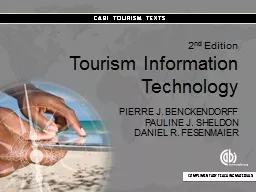PPT-FLEXING CAPABILITIES: INNOVATION AMBIDEXTERITY AND INNOVATION INTERMEDIARIES
Author : vivian | Published Date : 2023-11-06
Muthu de Silva Zaheer Khan Jeremy Howells MuthuDeSilva Introduction Innovation ambidexterity Simultaneous pursuit of exploratory and exploitative innovations
Presentation Embed Code
Download Presentation
Download Presentation The PPT/PDF document "FLEXING CAPABILITIES: INNOVATION AMBIDEX..." is the property of its rightful owner. Permission is granted to download and print the materials on this website for personal, non-commercial use only, and to display it on your personal computer provided you do not modify the materials and that you retain all copyright notices contained in the materials. By downloading content from our website, you accept the terms of this agreement.
FLEXING CAPABILITIES: INNOVATION AMBIDEXTERITY AND INNOVATION INTERMEDIARIES: Transcript
Download Rules Of Document
"FLEXING CAPABILITIES: INNOVATION AMBIDEXTERITY AND INNOVATION INTERMEDIARIES"The content belongs to its owner. You may download and print it for personal use, without modification, and keep all copyright notices. By downloading, you agree to these terms.
Related Documents

